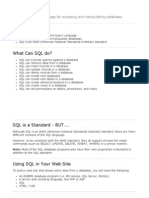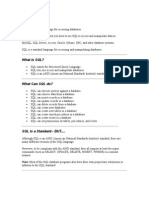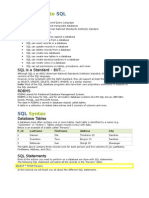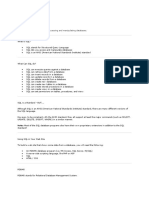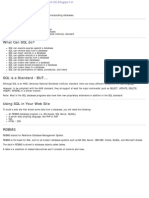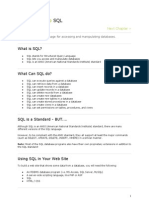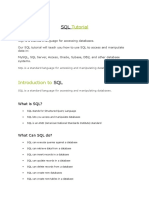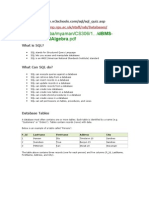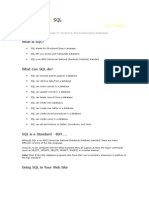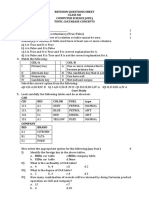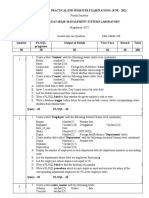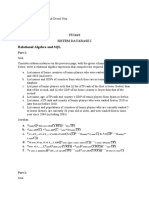0% found this document useful (0 votes)
907 views9 pagesSQL Is A Standard - BUT...
SQL is a standard language for working with relational databases. While SQL is an ANSI standard, different database systems may have their own proprietary extensions in addition to the core SQL functionality. The core SQL functionality includes commands like SELECT, UPDATE, DELETE, and INSERT. SQL can be used to build web sites by combining it with a server-side scripting language like PHP and an RDBMS database system like MySQL.
Uploaded by
manushettyCopyright
© Attribution Non-Commercial (BY-NC)
We take content rights seriously. If you suspect this is your content, claim it here.
Available Formats
Download as DOCX, PDF, TXT or read online on Scribd
0% found this document useful (0 votes)
907 views9 pagesSQL Is A Standard - BUT...
SQL is a standard language for working with relational databases. While SQL is an ANSI standard, different database systems may have their own proprietary extensions in addition to the core SQL functionality. The core SQL functionality includes commands like SELECT, UPDATE, DELETE, and INSERT. SQL can be used to build web sites by combining it with a server-side scripting language like PHP and an RDBMS database system like MySQL.
Uploaded by
manushettyCopyright
© Attribution Non-Commercial (BY-NC)
We take content rights seriously. If you suspect this is your content, claim it here.
Available Formats
Download as DOCX, PDF, TXT or read online on Scribd
/ 9
